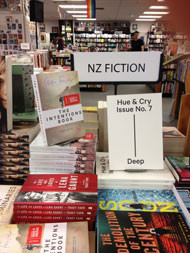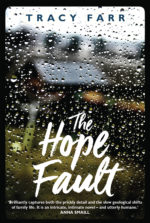NZ literary hotspots

New Zealand–based author Tracy Farr lists the must-see destinations for visiting literature lovers.
Tracy’s Top Five Picks
Hone Tuwhare’s crib
Kaka Point, The Catlins, Otago
Hone Tuwhare (Nga Puhi), 1922–2008, is one of New Zealand’s best-loved and most awarded poets. Late in his life – in 1992 – he moved to a crib (the southern South Island term for a holiday house) in the settlement of Kaka Point, in the Catlins region on the southern Otago coast, where he lived and wrote for his remaining years. In 2010 the Hone Tuwhare Charitable Trust was formed, to purchase Tuwhare’s crib and restore it as a writers’ residency. Walking on the wild beaches and beachcombing for seaweed and other treasures – witnessing the sea, like Tuwhare in his poem ‘Here’s Looking at You, Sea’ – is my favourite thing to do in the Catlins.
Janet Frame’s House
56 Eden Street, Oamaru
A couple of hours north of Kaka Point, the house at 56 Eden Street, Oamaru, was the childhood home of New Zealand writer Janet Frame from 1931 (when she was aged six) to 1943. Frame wrote about her childhood in her three-part autobiography, perhaps best known from its dramatisation in Jane Campion’s 1990 film An Angel at my Table. With the house as the focal point, visitors can take a walking tour of Janet Frame’s Oamaru.
Frank Sargeson House
14A Esmonde Road, Takapuna, Auckland
On my still-to-do list is a visit to the Frank Sargeson House in Auckland. Sargeson lived and wrote there for more than thirty years, and the simple house (called a bach – pronounced batch – in the North Island) is considered New Zealand’s first literary museum. Janet Frame boarded with Sargeson in Takapuna for more than a year, from 1955 to 1956, writing her first full-length novel, Owls Do Cry, in a small army hut – since demolished – behind Sargeson’s bach.
Katherine Mansfield Birthplace Te Puakitanga
25 Tinakori Road, Thorndon, Wellington
Katherine Mansfield’s first childhood home, a two-storey house on the edge of Wellington city, is now a Mansfield museum, its original 1880s decor beautifully restored and interpreted. Mansfield, who spent her first five years in the house, remembered it as a ‘dark little cubby hole’. The family’s move, in 1893, from 25 Tinakori Road was the basis for Mansfield’s story ‘Prelude’. Te Puakitanga, the MÄori name for the house, means the first place of the storyteller.
Wellington Writers Walk
Wellington waterfront
New Zealanders, and Wellingtonians in particular, are justifiably proud of Katherine Mansfield, so – of course – there’s a Mansfield sculpture as part of the Wellington Writers Walk. Each of the Walk’s nineteen sculptures – some in concrete, some in metal inlaid on wood – features a quote from a past or contemporary New Zealand writer. The Mansfield sculpture is balanced on the edge of the wharf, grounded in Wellington but ready to leave. The sculptures, their plaques designed by typographer Catherine Griffiths, are dotted on the Wellington waterfront, often in surprising places – one is under the surface of the water in a shallow pool; another rests on rocks as if cast up by the tide; others hide in crannies in rockeries, or cut-outs in the old wharf structure.
There’s a line from the Walk’s Lauris Edmond sculpture that I love, that captures Wellington – where I live – and the energy of its weather and topography: ‘This is the city of action, the world headquarters of the verb.’




